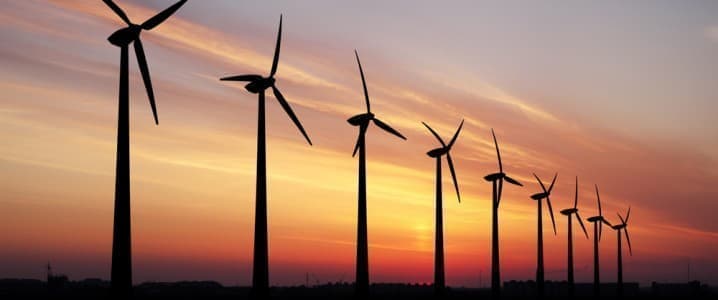The largest wind project in the Western Hemisphere is finally ready to begin construction. After nearly two decades on the drawing board, the 3,500-megawatt (MW) wind farm will break ground on a sprawling territory across New Mexico’s counties of Torrance, Lincoln, and San Miguel. When completed, the wind farm will be able to supply energy to consumers in New Mexico, Arizona, and California. The project is expected to come online in 2026 – nearly 20 years after it was initially proposed.
The SunZia project’s California-based renewable energy developer Pattern Energy Group says that it will “power the needs of more than 3 million Americans.” And, according to reporting by Electrek, “it is expected to create over 2,000 new jobs, [and] has an expected economic impact of $20.5 billion.” Pattern has already invested upwards of $5 billion into the project.
The project is split into two main branches: the wind farm itself, and the considerable transportation infrastructure that will be needed to transport that energy to its end users. As with most other massive-scale renewable energy projects, finding available land tracts big enough to house such enormous constructions requires traveling pretty far from the urban centers that represent the lion's share of the demand for all of that energy. All told SunZia Transmission will be a 550-mile ± 525 kV high-voltage direct current (HVDC) transmission line capable of transporting 3,000 MW of clean energy, spanning between central New Mexico, where the wind power will be produced, and south-central Arizona, where much of it will be consumed.
The reason that the project has taken so long has less to do with the SunZia Wind arm of the project, and more to do with the SunZia Transmission arm. The permitting and approval process for power lines and grids that cross through more than one state is notoriously difficult and inefficient. A recent New York Times op-ed referred to it as a “byzantine approval process that typically includes separate reviews by every municipality and state through which a power line will pass, as well as a host of federal agencies.”
In fact, the bloated timeline associated with SunZia is not an outlier. Instead, it is representative of a global problem with the current state of the renewable energy industry. A recent analysis from McKinsey identified difficult regulatory processes as one of three major challenges for the development of clean energy, along with finding sufficient and affordable land and an aging, over-congested, and unprepared power grid.
Then, once the plans for such a project are finally approved, it is often hit with litigation, further delaying the process. This is often a symptom of land-use competition, as well as anti-renewable sentiment and NIMBYism in the rural areas where these projects are invariably developed. “Over the past year, solar projects in Ohio, Kentucky, and Nevada have all been delayed or sunk by irked local people,” the Guardian recently reported. There has also been backlash at the local and state government levels, with measures restricting renewable energy facilities passed in 31 states.
All things considered, SunZia finally breaking ground is a monumental accomplishment. But the fact that it is developing added power production capacity hand-in-hand with added power lines and grid connectivity is an even bigger accomplishment. Insufficient infrastructure is one of the greatest challenges facing decarbonization in the United States. Increasingly, when renewable energy projects are finally ready to come online, they find that there is not a reliable grid to plug into. SunZia shows promise as a good model going forward, but a 20-year timeline isn’t going to cut it. The project should then also be viewed as a warning: if the U.S. wants to meet its climate goals, it has to seriously rethink and streamline its regulatory policies.
By Haley Zaremba for Oilprice.com
More Top Reads From Oilprice.com:
- Is The Oil Price Slide Finally Over?
- Oil Majors Are Preparing For A Difficult Period
- Iran Ramps Up Trade With BRICS Nations


















